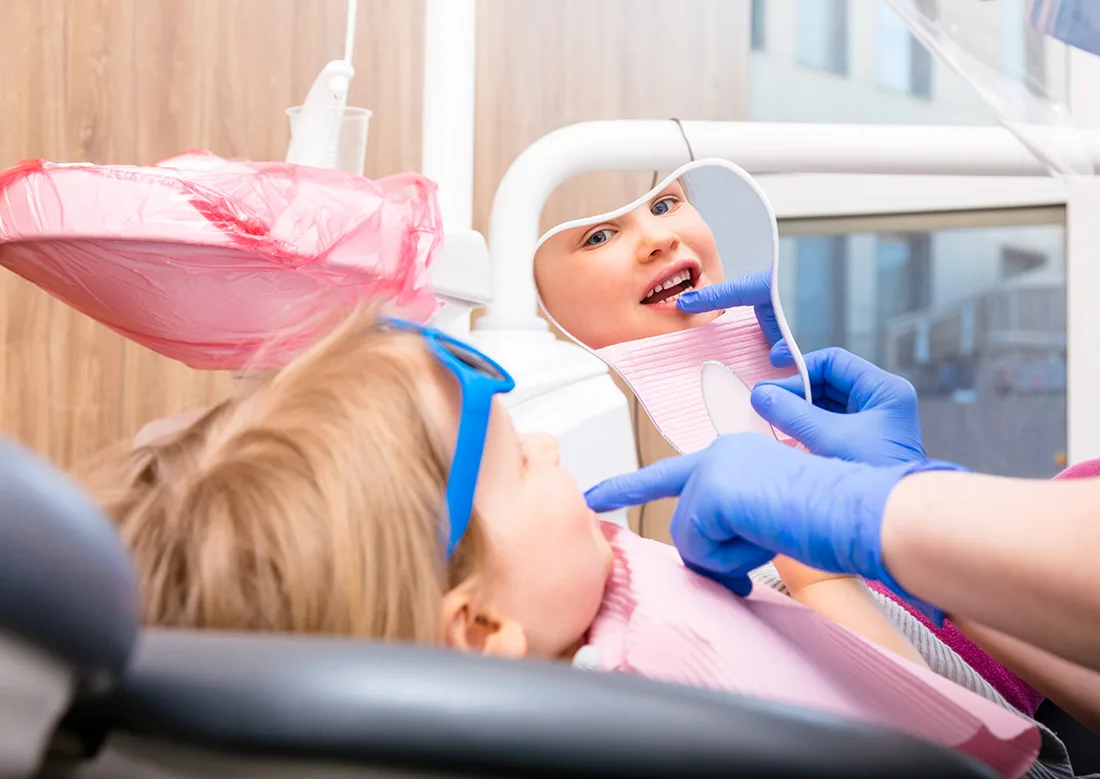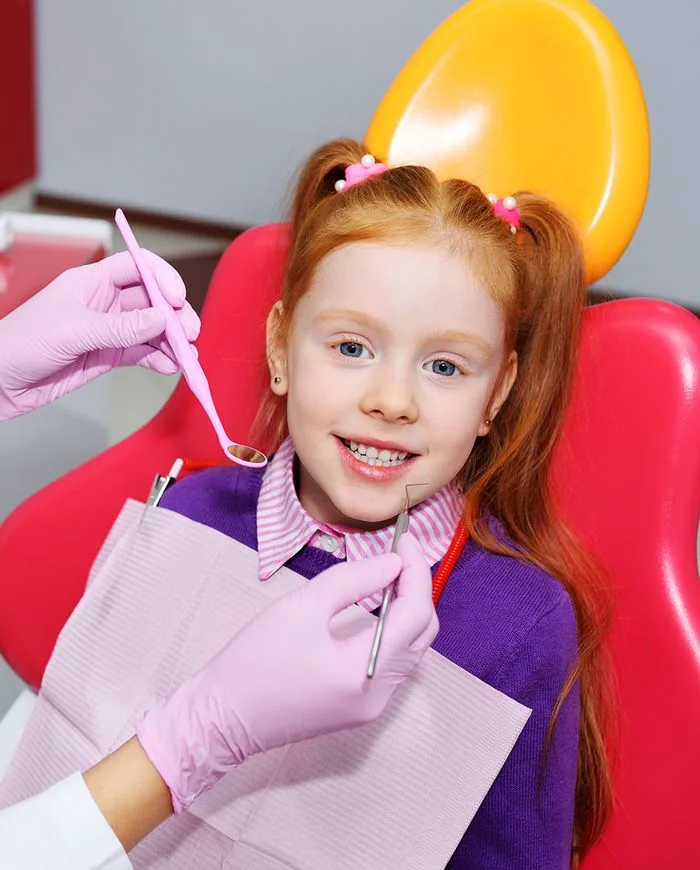Early Orthodontic CareIn Clackamas, OR
Did you know that the The American Association of Orthodontists (AAO) recommends all children be seen by an orthodontist by age 7? By starting proactive care early, we can help minimize or even eliminate their need for more extensive treatments in the future. Give your child a lifetime of healthy smiles.

Why Should I Choose Early Interceptive Orthodontics?
Because the sooner you get treatment for your child, the better the alignment of their teeth and jaws will be. Orthodontic problems often become obvious as early as the age of 6-8 in some kids. By using special early orthodontic treatments, orthodontists can correct lots of these problems while your child’s jaws are still growing, and before all of their permanent teeth erupt. This is known as “Phase 1” orthodontic treatment. Getting phase 1 treatment can simplify your child’s future treatment with braces, and can even eliminate the need for further orthodontic procedures, in some cases.

Advanced Comfort and Visualization with iTero Lumina
We use the iTero Lumina scanner to make your child's experience more comfortable and more precise. Its smaller scan tip improves comfort during digital impressions, while advanced features like real-time progress tracking and the Smile Outcome Simulator help you see your child's potential results before treatment even begins.

The Benefits of Phase 1 Orthodontics
Develop A Healthy Bite
Phase 1 orthodontics is particularly important in patients who may have serious jaw/airway problems or a narrow palate. These issues can interfere with the development of a healthy bite and proper growth of the jaws. In the future, this could lead to problems when the permanent teeth erupt, speech impediments, premature tooth wear, and lots of other problems. With early interceptive orthodontics, these complex issues can be reduced or eliminated.
reduce future complex issues
One of the main goals of early monitoring and Phase 1 treatment is to reduce the complexity of future orthodontic care. By guiding jaw growth and tooth eruption early on, we can often prevent problems like impacted teeth, the need for expose-and-bond procedures, or having to mechanically guide teeth into place during Phase 2. The goal is to create the best possible foundation now, so future treatment is simpler, shorter, and more predictable.
Treat Other Dental/Health Complications
A bad bite, misaligned teeth, and improper growth of the jaws can contribute to or cause lots of other problems like disordered breathing, a higher risk of gum disease and tooth decay, speech issues, and much more. Proper care from an expert orthodontist may help prevent all of these problems and more.

Flexible Financing
Insurance-friendly office
in-house, interest-free financing
retainer plan for a lifetime guarantee
extends payments beyond a patient's estimated timeframe for lower monthly payments
Keeping Care Accessible
We believe that everyone deserves a chance at a healthy smile, and that’s why we do everything we can to make paying for dental care as easy as possible.
The Early Interceptive Orthodontics Treatment Process
Initial Consultation
First, your child will need to have an appointment with Dr. Hill. She will take detailed x-rays, perform a comprehensive exam, and assess their overall oral health, growth, and airway, to determine if your child needs phase 1 orthodontics.
Personalized Treatment Plan
Once your child's treatment needs are assessed, Dr. Hill will develop a customized treatment plan. This could include special braces, habit appliances to help with things like thumb-sucking or improper swallow pattern, palate expanders, headgear, and a variety of other treatments. Every child is different, so your orthodontist will discuss their plan with you and schedule all of the necessary follow-ups and checkups.
Regular Orthodontic Check-Ups
Phase 1 orthodontics typically takes about 12 months, though some patients may have shorter or longer treatment times. During this time, your child will come back to our office for frequent visits with their orthodontist. Dr. Hill will check on their oral health, examine their progress, and make sure everything’s on track. This same process will continue until your child’s treatment is complete.

What If Phase 1 Isn’t Needed?
If your child doesn’t need early orthodontic treatment, they’ll be invited to join our Young Otters Club! This special growth and monitoring program allows us to check in every 6 to 12 months to make sure their facial growth, tooth eruption, and development stay on track. It also helps us time any future treatment at just the right moment, so when and if they do need orthodontics, we’re ready with the best possible plan.
What makes us different
Leading Provider of Invisalign First
We’re proud to be a leading provider of Invisalign First, the clear aligner system designed specifically for growing children in Phase 1 treatment. Also known as Invisalign for Kids, this option is ideal for younger patients who need early orthodontic support with a more comfortable and aesthetic approach. We also offer the Invisalign Palatal Expander, a modern alternative to the traditional Rapid Palatal Expander (RPE). Whether your child is best suited for aligners or expanders, or a combination, we offer personalized solutions to fit every smile.

FAQs
Frequently Asked Questions
Check out these frequently asked questions, or call us to speak with our team.
If your child is showcasing one or more of the following signs & symptoms, they may be a good candidate for early interceptive orthodontic treatment:
- Underbite
- Crossbites
- Crowded teeth
- Excessively spaced teeth
- Extra or missing teeth
- Excessive thumb, finger, or pacifier sucking
- Breathing through the mouth
- Abnormal or irregular permanent tooth eruption
Our team is happy to work directly with you and your child to assess these symptoms before they become severe issues over time.
Early treatment can be in a patient’s best interest if their problem is one that could worsen over time and cause severe dental issues in adulthood if left untreated. The goal of early treatment is to recognize and eliminate these problems as early as possible, so a child’s teeth and jaw can properly grow and maintain space for incoming adult teeth.
While many orthodontic problems are inherited, some are caused by common habits over time, such as thumb sucking, finger sucking, or excessive pacifier use. Other factors such as mouth breathing, dental disease, abnormal swallowing, poor dental hygiene, or early or late loss of baby teeth, accidents, and poor nutrition can alter your child’s teeth and jaw alignment. No matter the cause, our team will cater to your child’s unique needs and teach them healthy habits for a lifetime of optimal oral health.
The American Association of Orthodontists recommends that your child’s first check-up should take place before the age of 7 or any time an orthodontic issue is noticed before then. By the age of 7, your child’s mouth holds enough permanent teeth for an orthodontist to gain a strong understanding of your child’s mouth and jaws as they develop. This provides your orthodontist with plenty of information to give your child a tailored treatment.
The cost of early interceptive orthodontics is different for each patient. Factors that may affect the cost include the severity of your child’s teeth misalignment, appointment and visits, insurance type, and more. The best way to find out how much you’ll pay for your child’s early interceptive orthodontics is to schedule a consultation with your orthodontist.

Start Your Smile Journey
Schedule Your Consultation Today
Whether you're considering treatment for yourself or your child, we're here to help. Contact us today to schedule your complimentary consultation and take the first step toward a healthy, confident smile.

